How can I make a frequency divider with multiple outputs with these conditions:
- no microcontroller
- can use up to 4 SOIC-16 chips
- or up to 8 SOIC-8 (or any combo)
- can use one crystal/oscillator
- 9v supply
- can use one 5V voltage reg. if needed
- 1 mA output current is enough
- only 1 output will be needed.
- output selection mechanism is not important. (dip switches or multiple pcb trace routing/soldering @ production time)
Outputs: (in 1/f unit)
- 8~12 seconds
- 30~45 seconds
- 2~5 minutes
- 10~15 minutes
- 30~60 minutes
- 2~3 hours
- 4~6 hours
- 9~12 hours
- 18~24 hours
- 36~48 hours
I only have this idea: I calculated LCM (least common multiplier) of outputs in seconds. This number gives me a frequency where I can divide into specific divisors and each gives a desired output. But I need different custom dividings (no single counter IC can take care of all outputs) Found some counter ICs which can be adjusted to divide the input to a desired divisor. But this means I need 10 chips. which I don't have space for.
Since the outputs are roughly x2 multiplier of each other, and each output frequency can be chosen from a range, I guess common timer/counter ICs can do the job. But don't have any experience in solving such timing/counting problems.
The important requirement is the wide range of outputs from option 1 (a few seconds) to option 10 (a day or two). Also RC timers are not preferred, because this little circuit will be made in hundred quantity, and all should be similar in timings. i.e. if output 1 is designed for 1/9 Hz (t=9s), it should trigger exactly every 9 seconds (up to the crystal accuracy) in all circuits.
i.e these ranges are freedom of design, but not freedom of circuit operation.
